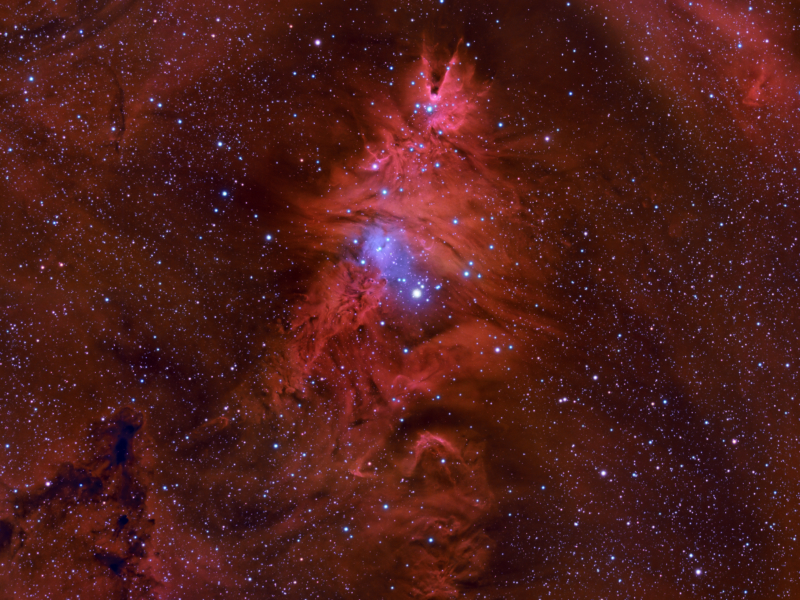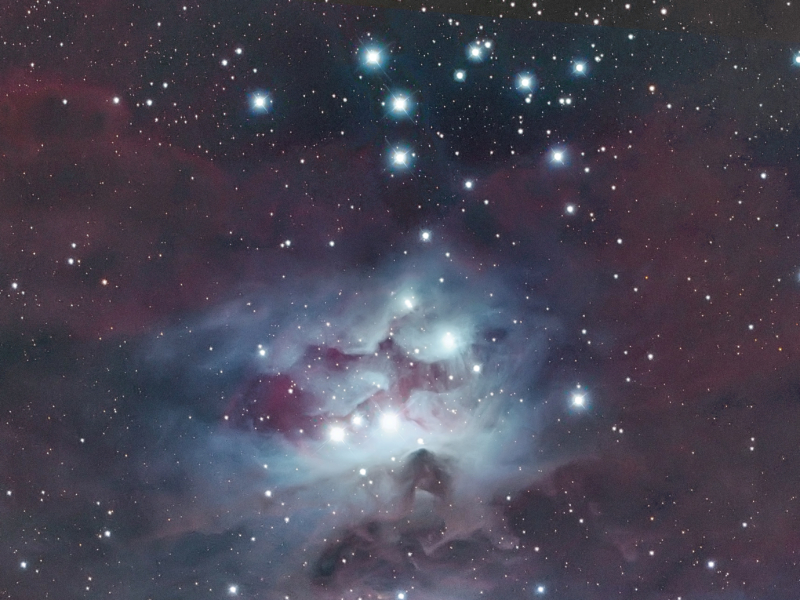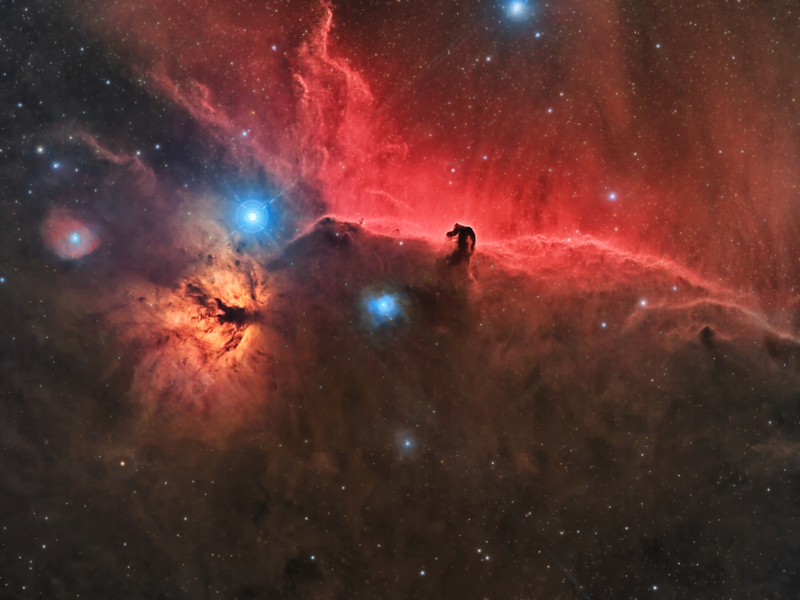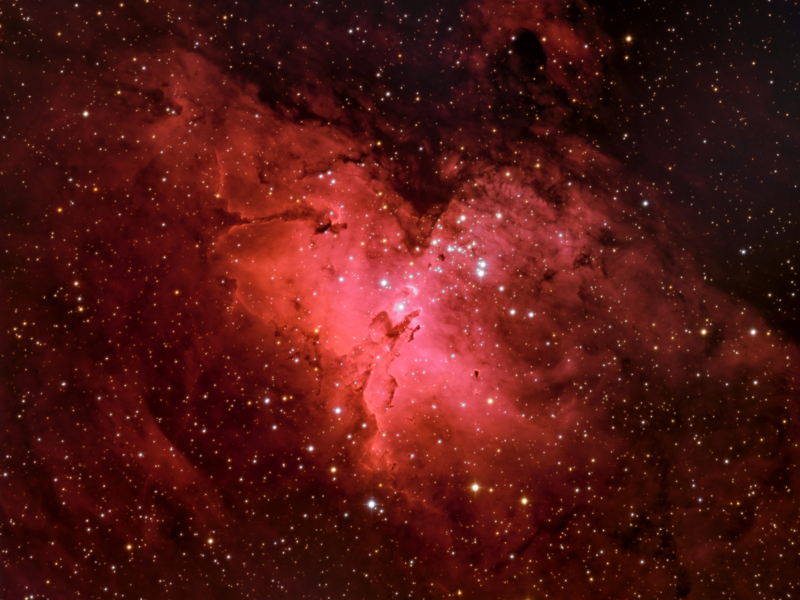IC 5067 (Pelican Nebula)
This ridge of emission in the constellation Cygnus is part of the larger IC 5070, more commonly known as the Pelican Nebula. The ridge spans approximately 10 light years, making up the pelican's head and back, and is 2,000 light years from Earth. The tendril to the right of center displays the telltale twin jets of an embedded protostar.
This image is displayed using the Hubble palette, and was captured using narrow band filters, mapping Sulfur 2, Hydrogen Alpha and Oxygen to Red, Green and Blue respectively. Additional images were taken through Red, Green and Blue filters to capture true star colors.
Data collected at the Dark Sky Observatory Collaborative (DSOC) in Ft. Davis, TX using SC Observatory's remote Planewave CDK 17" f/6.8 scope, in collaboration with:
John Kasianowicz, Josh Balsam, Mike Selby, Dhaval Brahmbhatt, Scott Johnson, Mike Bushell, Rich Johnson
Image processing: Andy Chatman
Object details
Nebula in Cygnus
Right Ascension: 20h 50m 48.0s
Declination: +44° 20′ 60.0
Magnitude: 8.0
Moon Age Average: 5.64 days
Moon Phase Average: 27.64 %
Imaging Setup
Fort Davis, Texas, USA
ACP
Adobe Photoshop
PixInsight 1.8
Exposure Detail
| Filter | Filter Brand | Bin | Qty | Exposure |
|---|---|---|---|---|
| R | Astrodon | 2x | 15 | 120 |
| G | Astrodon | 2x | 10 | 120 |
| B | Astrodon | 2x | 15 | 120 |
| Ha | Astrodon | 2x | 20 | 1200 |
| OIII | Astrodon | 2x | 18 | 1200 |
| S2 | Astrodon | 2x | 18 | 1200 |





